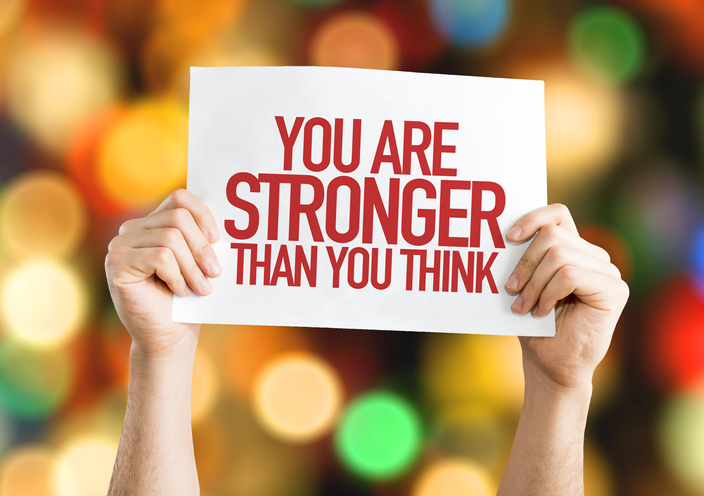
In this article, diabetes psychologist Faith Cook offers encouragement and support regarding the psychological effects of COVID-19 and social distancing. You can read part 1 here.
The Power of Non-Judgmental Observation

When I look at this photo, I imagine the goose on the left looking at the one on the right and thinking “Do I really act like that?” Judgment of others and ourselves is built into the fabric of our culture. I would ask that you take a moment to suspend all judgments of your emotions and behaviors in order to see yourself more clearly. Judgements serve as a form of self-punishment and may lead you to avoid examining yourself.
Before continuing, take a moment to close your eyes or drop your gaze to a point in front of you. Focus on your breathing. Notice the sensations as you breathe in and out through your nostrils. Set a timer and aim for at least 2 minutes of simply noticing how it feels as you breathe in and breathe out. And once you have been able to do so to the best of your ability right now, continue reading.
To set the stage for what I’m about to suggest, I want you to think about how we approach blood sugar management without the use of CGMs. We keep a record of our blood sugar before meals and after meals to understand our reaction to food. We check our blood sugar before bed, in the morning, and sometimes at 3am. Yes, it’s a lot of work, but does it pay off? It definitely does when we have guidance on how to respond to the information we collect. So I’m asking you to do a similar thing with your emotions, and I want you to do it without the fear of anyone else implying you’re doing something wrong. You’re not doing anything wrong – you’re making the best decisions you can with the information you have at your disposal.
Emotions, thoughts, bodily sensations, and behaviors can be tracked in the same way as blood sugars. Psychologists refer to this as self-monitoring. It is not a new concept. And no, it’s not a great deal of fun, but the payoff is a better long-term ability to know your unique way of responding to the world and to give you a chance to make changes.
Learning your response patterns is the foundation of changing how you choose to cope with challenging circumstances. The easiest way to do this is to understand basic changes that most people experience when they have a sense of distress. This is not an exhaustive list. We’ll start with the quickest access point – changes in the way you feel in your body.
1. Bodily sensations/changes that may occur:
Common bodily sensations during the experience of distress include muscle tension and resulting pain, jaw clinching, shoulders raised, headaches, rapid heart rate, rapid and shallow breathing, excessive sweating, feeling hot, alternating hot and cold feelings, flushing, stomach cramping and lack of appetite, and temporary tingling or numbness of the extremities. Blood sugars may also be harder to manage.
Also, please make sure these sensations are not a result of an out-of-range blood sugar. The same physiological process is in effect when your blood sugar is out of range as when you feel emotional distress. I can’t tell you how often I’ve thought I was upset about something, and it was in fact a blood sugar causing the bodily reaction. It has taken a long time and patient observation for me to separate the two. And sometimes they happen at the same time.
A key point to remember is that none of these sensations, as a result of physical response to a challenging situation are bad or dangerous. They are an indication that your body is preparing you to respond to this challenge.
2. Behavior changes that may occur:
Raised voice, yelling, cursing, pacing, crying, wringing your hands, alcohol or drug use, changes in eating (more or less), disordered eating, changes in sleep (more or less), more disorganized, impulsivity, avoiding people or situations, less social (or seeking more support).
3. Emotions that may occur:
Any emotion and generally a combination of emotions is experienced. Commonly people report a range of fear, sadness, anger, and grief when they are facing the unknown.
4. Thoughts/or thought patterns that may occur:
Repetitive thoughts, obsessive thoughts, disorganized thoughts. You may find yourself imagining the worst-case outcome or running problems through your mind on a continuous loop. Some people find that if they have had frightening things happen to them in the past, the memories come back strongly and unexpectedly.
The best way to learn about your response is to keep a journal like this:
Self-Help Anxiety Management App
I also encourage people to start keeping a journal of what helps them, or one good thing that happened today that they brought about, such as “I texted a friend,” or “I cleaned something that has needed cleaning for weeks,” or “I bought groceries for an older family member.”
Taking this time upfront to learn about your response to the unknown gives you power to choose what to do when the first signs of the distress response occurs. You can do this!
Please consider reaching out to a mental health professional to guide you. Think of your therapist as you would your endocrinologist. Your therapist is a guide to helping you learn how to monitor yourself and make your own adjustments.

Just like this caterpillar, we are all in a state of transition and growth throughout our lives – individually and collectively. Now we have been plunged head-first into the deep end of change, and we have no idea what we will become. For the caterpillar, all behaviors are based on instinct. As humans we have the capacity to plan, to hope, and to create.
Love:
Love signifies caring enough about yourself and others to respect the physical distancing recommendations. Our society tends to venerate the cowboy or the outlaw image. Being a renegade during this period downplays our social responsibility, and our love for one another. Love people by keeping a physical distance and an emotional presence.
Intention:
During difficult times, and in all times, it is helpful to develop an intentional practice that you use daily. This may start in the morning with a moment for reflection, mediation, or prayer. If you don’t have that practice, it can be of benefit to learn how to develop this for yourself. There is no correct way to establish this.
Some helpful apps to learn more are: Insight Timer and Calm.
Variety:
Try to have a wide and creative selection of activities or routines to immerse yourself into every day. Routine provides the structure and variety provides the flexibility to adapt to your differing needs. Allowing periods of rest and activity can be of benefit. There are times when you won’t be able to be active – respecting your need for rest is also critical to healing.
Engaged:
Being engaged means your energy and passion are going wholly into whatever you are doing in the moment. An example of this is the flow that artists describe when time, outside thoughts, and feelings are not experienced. They become lost momentarily in their creation. With this type of focus, you can offer yourself a break from worries and intense emotional and physical feelings in a healthy manner, while evoking the part of your brain that can plan and organize. Practicing engagement also helps you to feel involved in something larger than yourself and more involved in society, which in and of itself provides you protection from distress.
An easy place to start is with a walking meditation. In walking meditation, you focus only on the sensation of your feet contacting the ground. You walk at a pace that best helps you to maintain this singular focus. Some people find this practice much easier and more natural than a seated meditation.
You can also have this experience washing dishes, doing your laundry, lying down and staring at the sky, and all manner of things, whether active, reflective, or zoning out. The idea is to attend only to what you are doing in the moment. It takes some practice to be able to have this type of focus, and even with practice, few people can do it consistently. However, the point is simply to try and see what happens.
To sum it up:
Remember that you, as well as our whole world, are in a time of transition. We are more delicate than we realized. It is okay to not be okay. By taking time to care for yourself, you are also caring for your family, your friends, your community, and all of humanity.
Wishing you wellness.


Leave a Reply